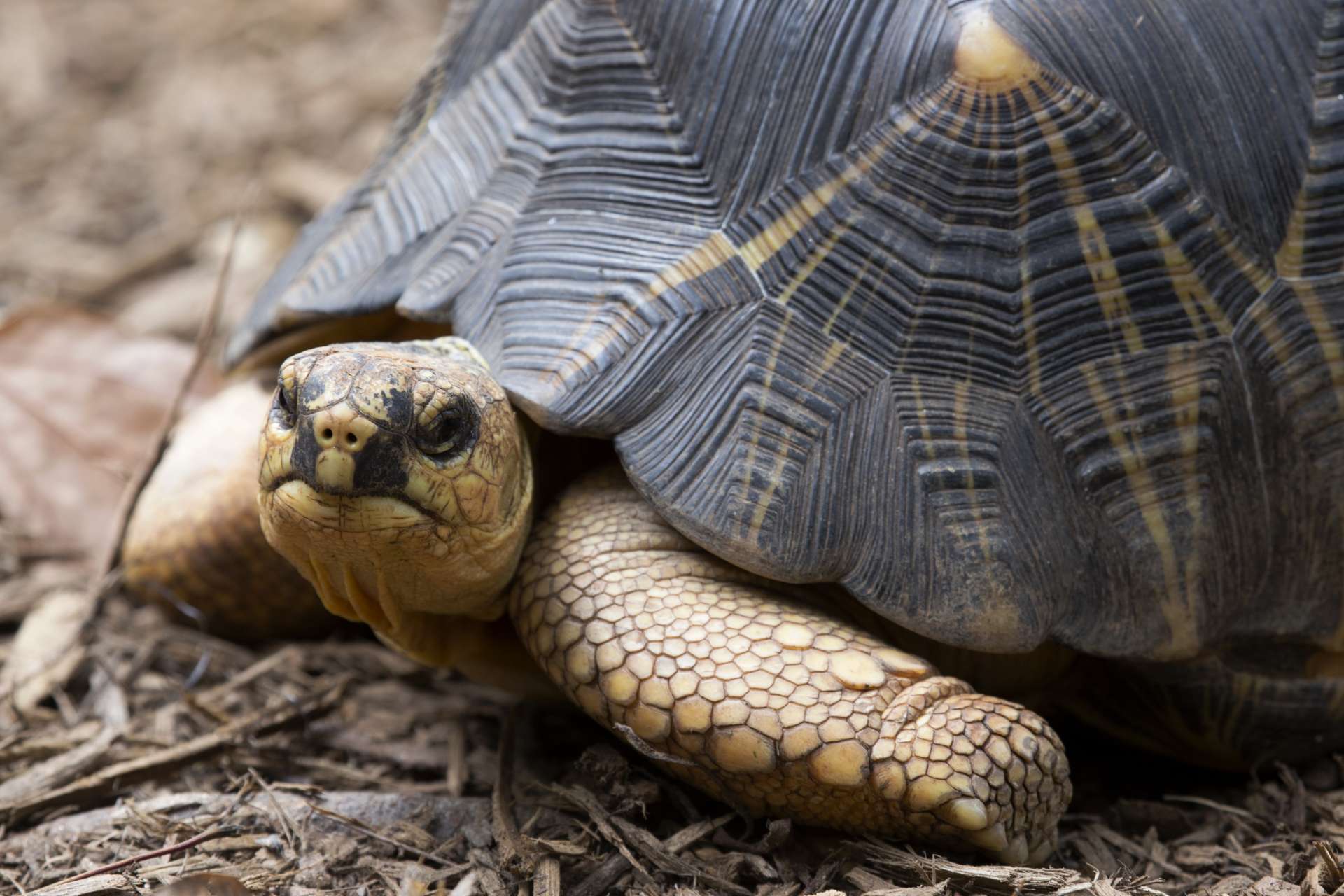Deep in the heart of Madagascar’s arid, thorny forests, a creature as captivating as it is vulnerable struggles for survival: the radiated tortoise. These gentle giants, adorned with shells resembling bursts of sunshine, face an uncertain future as habitat destruction and poaching cast long shadows over their existence.
Unveiling the “Star” Pattern: Why Are They Called Radiated Tortoises?
The radiated tortoise’s name is a testament to the mesmerizing beauty of its shell. Each dark plate is adorned with bright yellow lines radiating outwards, creating a pattern reminiscent of a starburst or a miniature sun. This striking feature, scientifically reflected in their name Astrochelys radiata (combining “star” and “radiated”), is both a blessing and a curse. While it distinguishes them as one of the most beautiful tortoise species, it also makes them highly sought-after in the illegal pet trade, pushing them closer to the brink.
How Many Radiated Tortoises Are Left? A Conservation Crisis
Determining the exact number of radiated tortoises remaining in the wilds of Madagascar is a complex task. The IUCN Red List, a widely recognized conservation authority, estimates a population between 1.6 and 4 million individuals. However, some studies suggest a more hopeful figure, possibly as high as 12 million. This discrepancy highlights the challenges of accurately assessing populations in remote regions and underscores the urgent need for further research.
The illegal pet trade, driven by the tortoises’ captivating appearance, remains a significant threat. A chilling example of this crisis emerged in 2018 when over 10,000 radiated tortoises were discovered in a single home in Toliara, Madagascar, intended for the black market. This startling discovery exposed the massive scale of poaching and trafficking these animals endure.
Reaching for the Sun: How Big Do Radiated Tortoises Get?
Radiated tortoises are not only recognized for their dazzling shells but also their impressive size. These gentle giants can grow up to an average of 16 inches in shell length, with males typically being slightly larger than females. Their robust build is evident in their weight, as a healthy adult can tip the scales at a remarkable 35 pounds.
Imagine, a creature smaller than your thumb at birth, slowly growing over several decades to reach the size of a small dog! Their lifespan is equally impressive. In their natural habitat, radiated tortoises can live for over a century, with records of individuals reaching an astonishing 188 years old. However, it’s important to note that this longevity is closely linked to the pristine conditions of their wild homes, and captive lifespans are typically shorter.
A Collective Effort: Protecting Madagascar’s Starry Residents
While the challenges facing the radiated tortoise are daunting, dedicated conservationists and local communities are working tirelessly to safeguard their future. Breeding programs in zoos and sanctuaries around the world are playing a crucial role in bolstering populations, while initiatives to protect their natural habitat in Madagascar are gaining momentum.
You, too, can make a difference. Supporting organizations dedicated to radiated tortoise conservation, educating others about their plight, and refusing to support the illegal pet trade are all vital steps in the right direction. These ancient creatures, symbols of Madagascar’s unique biodiversity, deserve a fighting chance. It’s up to all of us to ensure their survival for generations to come.
Explore Further:
- Dive into the vibrant underwater world and meet the rainbow parrotfish, a mesmerizing species with an array of colors.
- Discover the fascinating characteristics of the porkypine, a nocturnal mammal with an adorable appearance.













1 thought on “The Radiated Tortoise: A Fight for Survival in Madagascar’s Spiny Forests”
Comments are closed.